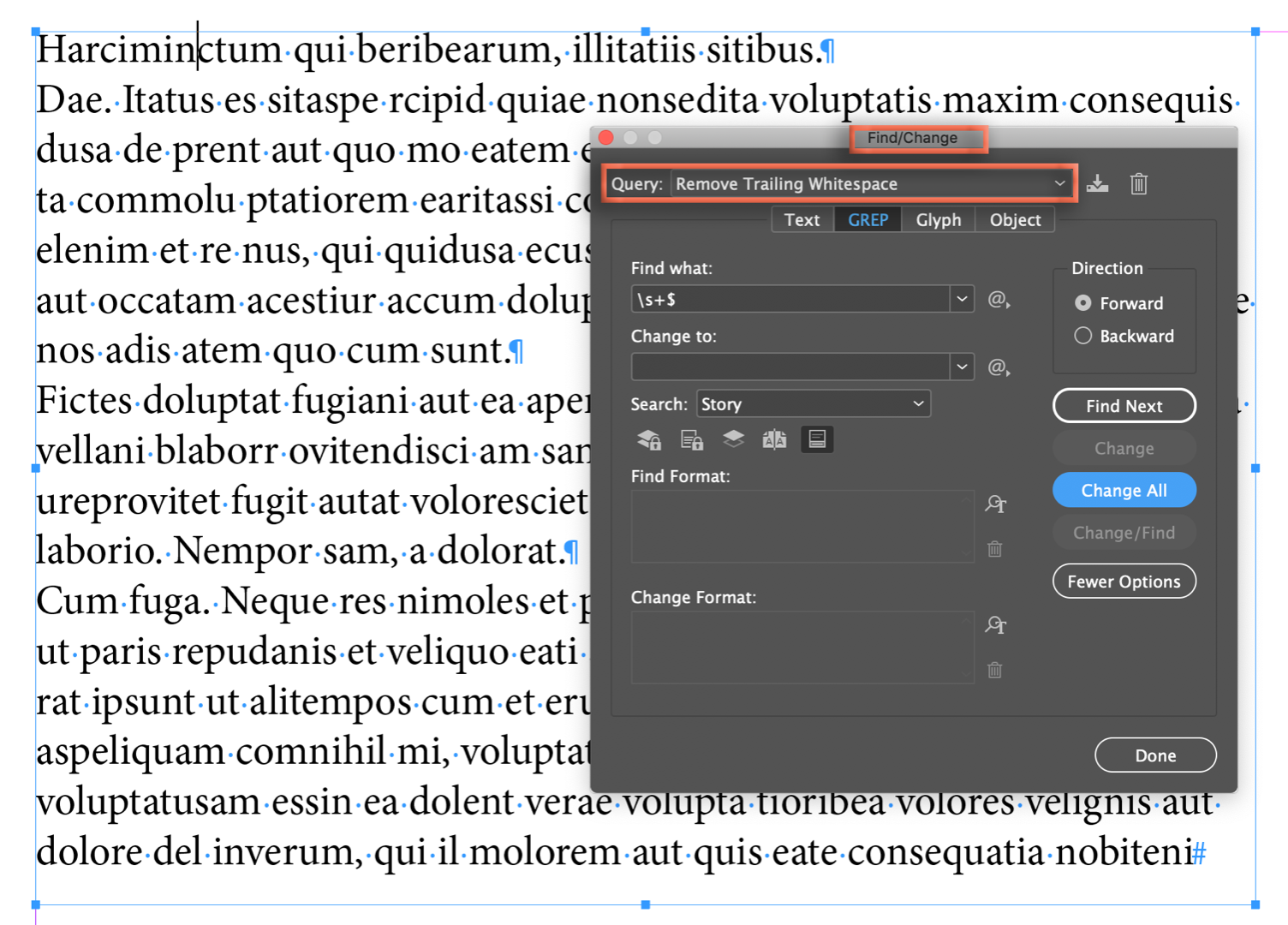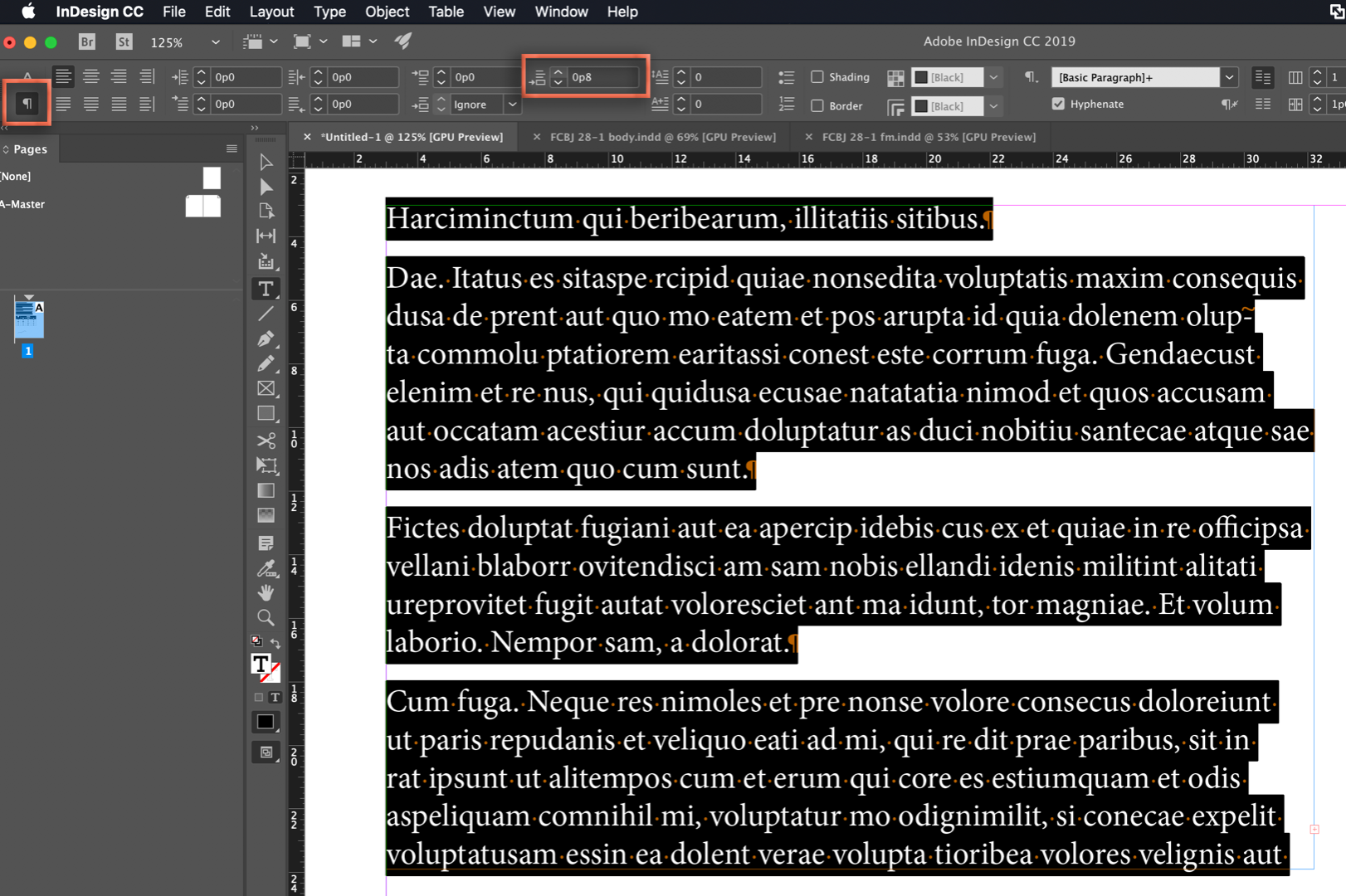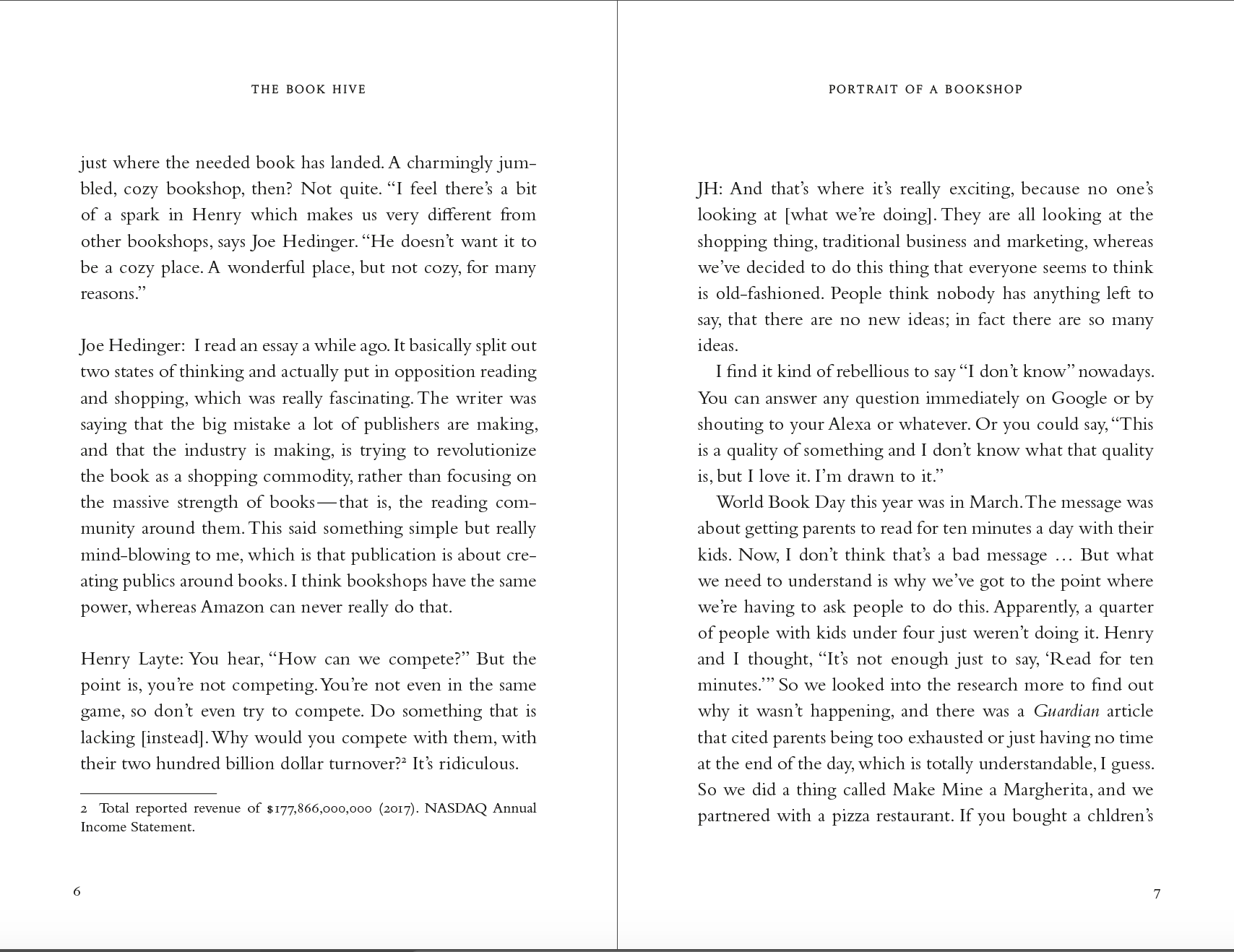
Copy link to clipboard
Copied
It would be great to know where/how in the Text Frame Options to have InDesign automatically prevent line spaces at the top of text frames. For example, when there is a carriage return between paragraphs, I have been manually deleting it when the subsequent paragraph ends up one line from the top of a text frame. But this manual method is messy because the positioning will change as we edit text before this point. How can I fix the text frame options to prevent carriage returns from existing at the top of text frames? Thanks!
 1 Correct answer
1 Correct answer
Instead of needing extra returns here or there, take another look at your layout.
Define two paragraph styles:
- Body text with no paragraph spacing defined
- Quote with Space Before defined.
Assign the paragraph styles to the appropriate paragraphs.
~Barb
~~~~~~~~~`
Hmmm. I thought I added this screen shot earlier, so editing my post and adding it now.

Copy link to clipboard
Copied
Hi Jon:
Using double ¶s as a way to add spacing between paragraphs is a mistake that carries over from typewriters and word processors, and you have discovered why it is not a good idea.
Take a few minutes to remove the double (and potentially triple) returns, and then use the paragraph spacing commands to define the same spacing, which eliminates this issue.
Before:

After running the Remove Trailing Whitespace* query in Edit > Find/Change. (Save the file first):
Define Space After in the Control panel. (Redefine your style after you do this if you are using styles):
~Barb
* You can use Remove Trailing Whitespace -or- Multiple Returns to Single Returns. Both come with the software.
Copy link to clipboard
Copied
Hi Jon,
you are looking at the wrong place.
It's not in the Text Frame Options.
Simply make sure that there are no empty paragraphs in your text.
If you need space between paragraphs define this space in the Paragraph panel or better in the custom Paragraph Style you assigned to the text: Space Before and/or Space After.
To remove empty paragraphs you can do this using Find/Change with the GREP tab.
Find expression:
^.{0,0}\r
Change leave empty.
Press Change All after setting the scope of the Find/Change action to the document, the story of the selection or the selection itself.
Regards,
Uwe
EDIT: Barb was faster 🙂
Nevertheless I will not remove my reply.
Copy link to clipboard
Copied
JonSimons wrote
But this manual method is messy because the positioning will change as we edit text before this point. How can I fix the text frame options to prevent carriage returns from existing at the top of text frames?
The direct answer to your question is that if you use multiple returns, you can’t prevent a return at the top of the page, and it will be messy because you delete them now and reinsert them later when you get the next edit.
The best way to set up an InDesign document is the one that will save you time when the edits come in, and Barb’s answer of space after is what works here. Use the same number as the leading in your body text if you want one exact line.
~ Jane

Copy link to clipboard
Copied
Dear all,
Thanks for the very helpful suggestions. I will attach a screenshot of my layout. You can see that I need both normal carriage returns (between paragraphs) and something equivocating a double-return (separating interview questions and sections). You will also notice at the top-right how my archaic double-return has created an unnecessary space at the top of the right column. But the "Space After" setting would add space everywhere, so that's not an option. How can I keep the general paragraph "Space After" setting the same but somehow prevent this "ghost line break" which can be seen at the top of the right column? Thanks! This forum is extremely helpful to me.

Copy link to clipboard
Copied
Instead of needing extra returns here or there, take another look at your layout.
Define two paragraph styles:
- Body text with no paragraph spacing defined
- Quote with Space Before defined.
Assign the paragraph styles to the appropriate paragraphs.
~Barb
~~~~~~~~~`
Hmmm. I thought I added this screen shot earlier, so editing my post and adding it now.


Copy link to clipboard
Copied
Hi Barb,
I was hoping there would be some other way to stipulate that text should be forced to the top of text frames but now I understand better. If having to define and stipulate different Paragraph Styles is the best, or only, way, my followup question is: If I am already using various Paragraph Styles, what's the simplest way to add an additional paragraph style on top of an existing one such that the new paragraph-spacing syles would inherit any changes I make to the main body style? Thanks again!
Warmly,
Jonathan
Copy link to clipboard
Copied
Hi Jon:
You are correct that styles are the way to handle this.
Do you have a style for your body text already set up? If so,
- assign your body text tag to a quoted paragraph
- click in the quoted paragraph and add a new paragraph style (note that this will automatically base the quoted paragraph on body)
- give it a short, logical name (i.e., quote) and then define the desired space above in Indents & Spacing
- assign it to the quoted paragraphs.
The Based On in step 2 is what you are asking for. Quote will be based on body, so if you end up changing the body tag, quote will pick up the changes.
~Barb

Copy link to clipboard
Copied
If I wish to make space between paragraphs using "Space After" in the paragraph settings instead of double double ¶s, is there any reason why I shouldn't use single ¶ for a break (with, say, 3mm of Space After) and then use SHIFT-RETURN when I don't want that extra 3 mm of Space After? This would enable me to not have to have multiple Paragraph Styles. Multiple paragraph styles being defined each time the paragraph requires a single versus double space would be quite time-consuming. So, adding 3 mm space after and then using SHIFT-RETURN for normal paragraph breaks, is this a good idea or problematic in some other way?
Thanks!
Jonathan
Copy link to clipboard
Copied
That is a horrible idea. Please learn to use styles properly. CC2019 has an added a feature for handling spacing in paragraphs with the same style.

Copy link to clipboard
Copied
Thanks, Bob, for steering me in the right direction. I can define multiple paragraph styles for multiple types of paragraph spacing, no problem. But can you please give me a hint, or the name, of this new feature in CC2019 that you are referring to? It's great if a new feature can make this task more streamlined. I can't seem to figure out whether 2019 has been released yet. Mine is 13.1; I think that's 2018. Thanks!
Copy link to clipboard
Copied
A picture is worth a thousand words:

Copy link to clipboard
Copied
Hi there.
Sorry to ask, but... don't you already have 2 paragraph styles defined?
I was looking at your screenshot and I was wondering how did you deal with the left indent.
Or... did you... add a tab? ![]()


Copy link to clipboard
Copied
Hi Bob,
So, am I correct to guess that tabs are another horrible idea? Yes, they are tabs. Believe it or not, I am somewhat proficient at defining Styles but I am self-taught, learning piecemeal with some sizeable gaps in my knowledge. For example, I have one style that adds the drop caps for the first paragraph, then another basic body style. I could add more styles for indenting rather than tabs, as well as another style for adding that extra Space After, when I need an extra space between paragraphs. But keep something in mind, I am a publisher designing books and sometimes we have articles as long as 30,000 words, or a book of 120 pages, etc. Having to uniquely define every paragraph of a book (versus a marketing flyer) is tedious. But is that what I need to do, in your opinion?
Thanks! I'm learning a lot.
Warmly,
Jonathan
Copy link to clipboard
Copied
Depends on what you're using them for. If it's for indents, yes, horrible idea.

Copy link to clipboard
Copied
Okay, thanks for explaining -- and for pointing out the new 2019 paragraph spacing feature!
Copy link to clipboard
Copied
Get a handle on styles. The longer the document the more imperative it is that you understand how they work.
Think about it. You have a 500 page document and you’ve used a half inch indent for each paragraph. The client tells you the indents have to be a quarter inch.
With styles, that’s a 10 second fix.

Copy link to clipboard
Copied
Although I have not used first-line indention instead of tabs, I have set tabs within Paragraph Style Options > Tabs. Although I can't test this now, since my InDesign is in the middle of updating to 2019, I am pretty sure I am able to change tab width globally by changing it in the Paragraph Style Options > Tabs settings. That said, are there other reasons why I should create them as first-line indention and not tabs? In any case, styling the tab/indention automatically is good, since that's most commonly needed; but then I will have to have a secondary modification style to remove it because there are times when it's not wanted (like the interview text in my previous screenshot).
Copy link to clipboard
Copied
Hi Jon,
Style #1: Body Text
Style #2: Body Text no indent (based on body text, but with no first line indent)
Because Style #2 is based on Style #1, it will update when Style #1 is changed.
When your documents are 600-800 pages or above 1000 pages, you will be glad your styles are in good shape.
~ Jane
Copy link to clipboard
Copied
That said, are there other reasons why I should create them as first-line indention and not tabs?
Tabs are an extra, unneeded character. You can easily remove them all with a Find/Change query and define the first line indent.
I started my first response to you with the comment that double ¶¶s stem from typewriters and word processors (which ported over typewriter techniques). Same with first line tabs. They were a big deal on an IBM Selectric—and I remember my delight at not having to press the spacebar five times to indent a paragraph, but that was a long, long time ago. InDesign is a professional page layout application and it's time to let go of old habits.
Also on the list... underlining for emphasis. Inch marks for quotes. Double hyphens for em dashes. Hyphens between ranges of numbers. Three periods for an ellipsis. Disabling hyphenation on body text. These are all habits that stem from the limitations of using a typewriter and are rarely if ever seen in professionally typeset text. There are some excellent books on typography and I highly recommend tracking one down.
And I second Bob on learning how to use styles. It's a game changer.
~Barbh
Find more inspiration, events, and resources on the new Adobe Community
Explore Now


